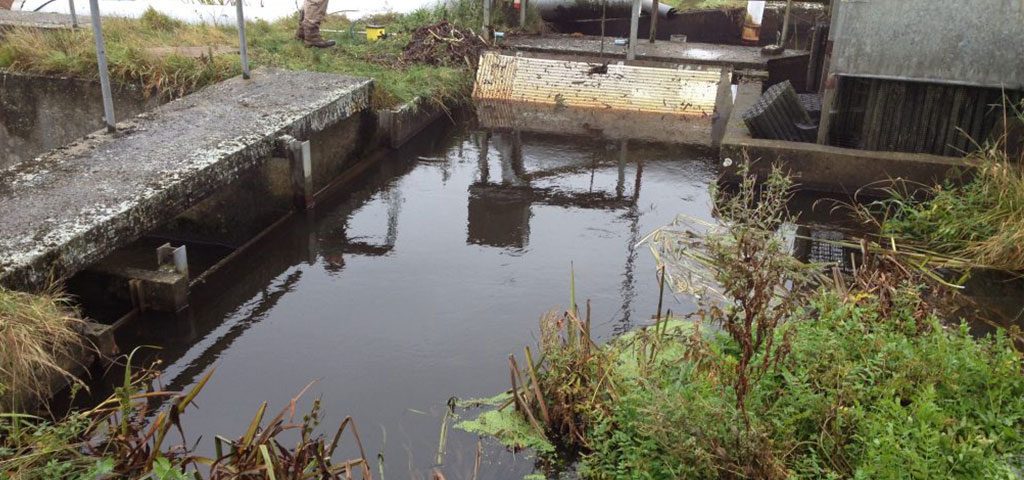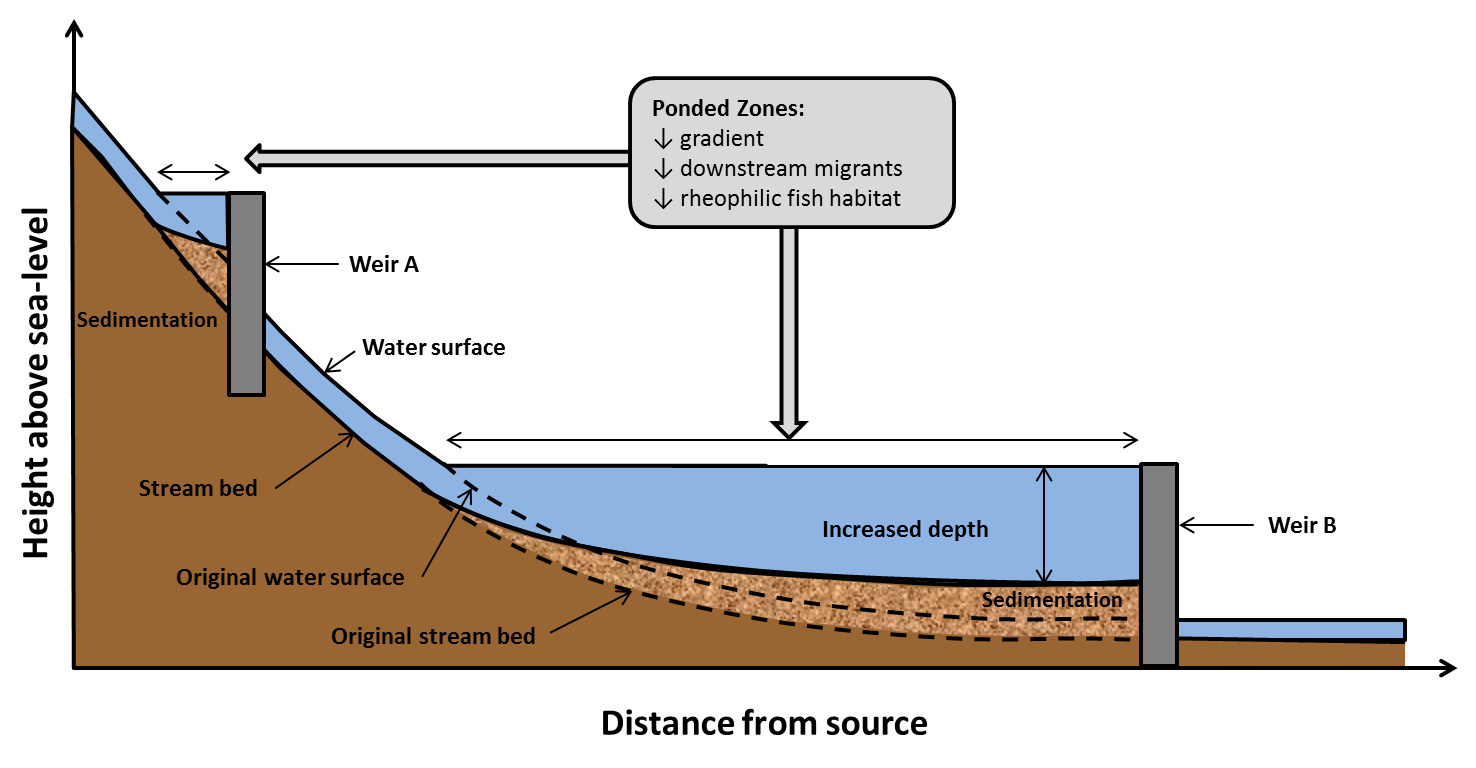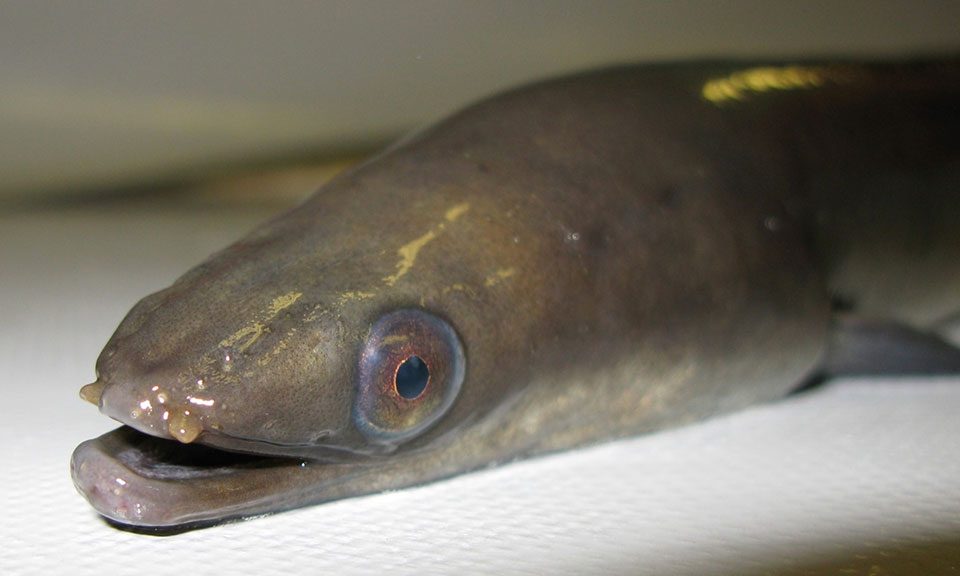Barriers also ruin ideal habitats

Challenging the salmonid paradigm
October 2, 2017
Removal of the River Eamont’s Carleton Hall weir and Low Mill weir – Durham University’s role
November 8, 2017
Author
Kim Birnie-Gauvin
“Typical management interventions aim to address issues concerning fish passage, but often omit any consideration of the habitat that has already been lost as a result of barriers…”
By: Kim Birnie-Gauvin
Section for Freshwater Fisheries and Ecology, National Institute of Aquatic Resources, DTU Aqua
By: Kim Birnie-Gauvin
Section for Freshwater Fisheries and Ecology, National Institute of Aquatic Resources, DTU Aqua
It is widely known and accepted that barriers are a huge hindrance to fish passage; they decrease connectivity between downstream and upstream habitats. What is less known and accepted however, is the extent to which barriers ruin ideal habitats.
A barrier – be it a small ford, a weir or a large hydropower dam – completely alter the habitat found upstream of that barrier. It forms what we call a “ponded zone”, where water depths are greater, flow is diminished, sedimentation is heightened, and gradients are unnatural (see Figure). These alterations have severe consequences for aquatic organisms, especially rheophilic fish species (species that require fast-moving and oxygen-rich water) like trout and salmon. At the spawning stage, the lack of rocks and cobbles make it difficult to successfully spawn. At the egg stage, sedimentation will prevent young fish from successfully emerging into the water column. At the fry stage, lack of gradient as well as slow-moving waters will prevent optimal development. At the smolt stage, decreased flow, increased depth and diminished gradient will slow their downstream migration and increase their risk of predation by fish which thrive in those ponded zones.
A barrier – be it a small ford, a weir or a large hydropower dam – completely alter the habitat found upstream of that barrier. It forms what we call a “ponded zone”, where water depths are greater, flow is diminished, sedimentation is heightened, and gradients are unnatural (see Figure). These alterations have severe consequences for aquatic organisms, especially rheophilic fish species (species that require fast-moving and oxygen-rich water) like trout and salmon. At the spawning stage, the lack of rocks and cobbles make it difficult to successfully spawn. At the egg stage, sedimentation will prevent young fish from successfully emerging into the water column. At the fry stage, lack of gradient as well as slow-moving waters will prevent optimal development. At the smolt stage, decreased flow, increased depth and diminished gradient will slow their downstream migration and increase their risk of predation by fish which thrive in those ponded zones.

This may be especially severe in lowland rivers, where rheophillic habitat is naturally limited. A recent discussion piece by DTU Aqua scientists emphasizes the need to consider the loss of habitat in management plans: “What’s the point in spending money, time and effort to move fish upstream a barrier if the habitat up there is too poor to sustain them”, asks Kim Aarestrup, one of the authors. The study found that between 24 and 40% of the vertical habitat as well as 21 to 29% of the horizontal habitat was lost due to barriers in 3 of Denmark’s major river systems. In urban areas, this habitat loss is likely to be much greater, perhaps close to 100% some places.
Currently, there is a huge focus on the effects of barriers on passage, with little consideration for habitat modifications. But what would be the point in providing access to upstream habitats if those habitats are inadequate for spawning and development, and if they provide the wrong environmental cues for migration? The paper calls for a greater consideration of these factors when working with river management, as well as an increased focus on restoring original habitat quality. Otherwise, we risk the waste of financial resources many cases.
Currently, there is a huge focus on the effects of barriers on passage, with little consideration for habitat modifications. But what would be the point in providing access to upstream habitats if those habitats are inadequate for spawning and development, and if they provide the wrong environmental cues for migration? The paper calls for a greater consideration of these factors when working with river management, as well as an increased focus on restoring original habitat quality. Otherwise, we risk the waste of financial resources many cases.

The project is partly funded but the National Danish Fish License funds and Horizon 2020 project AMBER (Adaptive Management of Barriers in European Rivers).
Read the full story here: http://onlinelibrary.wiley.com/doi/10.1002/aqc.2795/abstract
Reference: Birnie-Gauvin, K., K. Aarestrup, T.M.O. Riis, N. Jepsen, A. Koed. Shining the light on the loss of rheophilic fish habitat in lowland rivers as a forgotten consequence of barriers and its implications for management. Aquatic Conservation: Marine and Freshwater Ecosystems. In press. doi: 10.1002/aqc.2795
Read the full story here: http://onlinelibrary.wiley.com/doi/10.1002/aqc.2795/abstract
Reference: Birnie-Gauvin, K., K. Aarestrup, T.M.O. Riis, N. Jepsen, A. Koed. Shining the light on the loss of rheophilic fish habitat in lowland rivers as a forgotten consequence of barriers and its implications for management. Aquatic Conservation: Marine and Freshwater Ecosystems. In press. doi: 10.1002/aqc.2795




